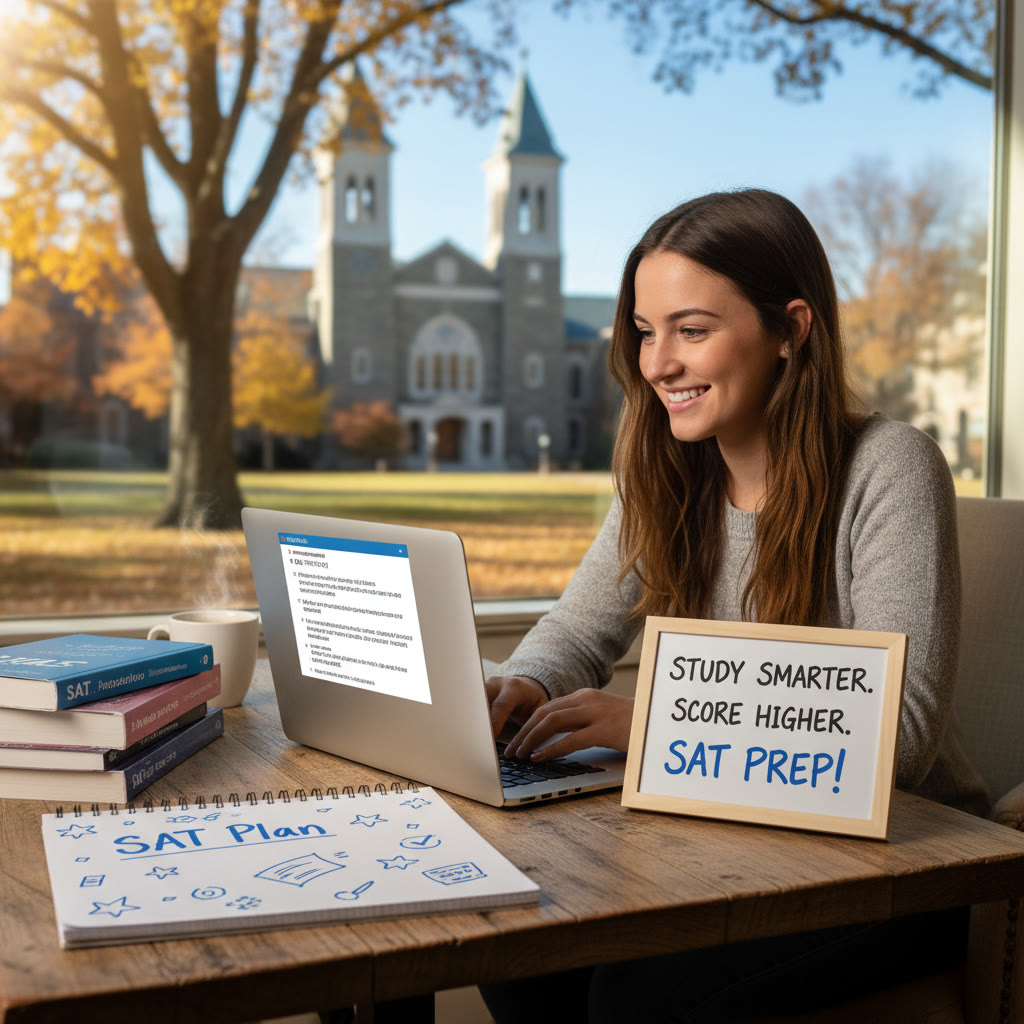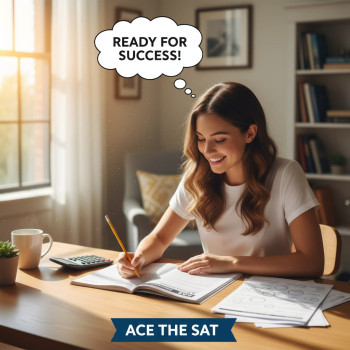Understanding Villanova’s SAT Expectations: What Matters Most
If Villanova University is on your college list, you’re probably asking: “What SAT score do I need?” That’s a smart question — especially now that the SAT has shifted to a fully digital format and colleges are continually refining how they use test scores in admissions. Let’s cut through the noise and give you a clear, sensible map of what Villanova looks for and how the SAT fits into your story.

Quick snapshot
Based on publicly reported college profile information, the typical SAT range for admitted students at Villanova hovers in the mid 1400s (on the 1600 scale). That gives you a practical target: aim to be comfortably within — or above — the 1410–1490 range. But remember: admissions is holistic. SAT scores are an important quantitative signal, but grades, course rigor, essays, recommendations, extracurriculars, and demonstrated fit all matter.
How Villanova Uses the SAT in Admissions
Villanova evaluates applicants holistically. The SAT provides a standardized, comparable snapshot of academic readiness across different high schools and curricula. For a selective private university like Villanova, a strong SAT score can:
- Confirm academic preparedness for rigorous coursework.
- Complement a high GPA and honors/AP/IB classes.
- Help in scholarship consideration when applicable.
But keep this in perspective: a single test score won’t define your application. If parts of your profile stand out — leadership, research, community service, artistic or athletic achievements — they can help offset a lower test score. Likewise, if your SAT is strong, it may strengthen your candidacy in a crowded applicant pool.
What the SAT Range Means and How to Set Your Target
When you see a published SAT range for Villanova, think of it like a competitive zone rather than an absolute cutoff. Here’s how to translate that range into an actionable target:
- If your score is inside the middle range (around 1410–1490): You’re competitive. Focus on polishing essays and highlighting academic rigor.
- If your score is above the range: You’ll stand out academically; emphasize fit and leadership in other parts of the application.
- If your score is below the range: Consider retaking the Digital SAT after targeted preparation, or use other strengths (GPA, recommendations, meaningful extracurriculars) to present a strong holistic profile.
Practical rule of thumb
Set a primary target score at the top of the reported range (around 1490) and a safety target about 50 points lower. That approach gives you room to showcase consistent academic ability while still having a realistic plan if early practice scores are lower.
Digital SAT: What’s Different and Why It Helps
The SAT is now delivered digitally — shorter sections, adaptive question delivery within sections, and faster score reporting. For many students this is a relief: the test can feel less long and more focused. But the new format changes strategy. Here’s what to know:
- Sections are adaptive by module (your performance in the first module affects the difficulty of the second module), so a strong start matters.
- Timing is different — practice pacing with official digital practice tests is essential.
- Familiarity with on-screen tools (highlighting, flagging, answer review) reduces test-day anxiety.
Because the format reward steady accuracy and pacing, targeted practice on the digital interface can often move scores more efficiently than just doing more paper tests.
Concrete Preparation Plan: Timeline and Milestones
Use this sample timeline as a guide. Adjust for your school schedule, extracurricular load, and how many months you have before your preferred test dates.
12–9 months before application deadlines
- Take a diagnostic Digital SAT to establish baseline scores and patterns.
- Identify target score (e.g., 1490) and set micro-goals for reading, writing, and math.
- Create a study calendar with daily and weekly practice blocks.
8–4 months out
- Focus on skill-building: vocabulary-in-context, algebra & data analysis, problem-solving strategies, and evidence-based reading.
- Incorporate timed modules to replicate digital test pacing.
- Review mistakes analytically — categorize errors (carelessness, concept gaps, pacing) and track them.
3–1 months out
- Take at least two full-length timed digital practice tests under test-like conditions.
- Fine-tune timing strategies and review specific content gaps.
- Plan test day logistics: check technology requirements, test center location (or school-day test registration), and bring permitted ID.
Final two weeks
- Scale back intensity; focus on light review, targeted drills, and mental preparation.
- Prioritize sleep, nutrition, and short, focused practice sessions.
Example Study Breakdown: Weekly Schedule (8-Week Intensive)
| Week | Main Focus | Weekly Activities | Progress Check |
|---|---|---|---|
| 1–2 | Baseline & foundational concepts | Diagnostic test; review core math and grammar rules; daily 45–60 min practice | Review diagnostic and set target |
| 3–4 | Reading & evidence-based skills | Passage analysis drills; 2 timed reading modules; vocabulary in context | Mini practice test; track accuracy |
| 5–6 | Math problem-solving & data analysis | Targeted math sets; focus on algebra, modeling, and real-world data | Full digital practice section; error analysis |
| 7 | Mixed timing & test strategy | Full-length practice test; review timing strategies and endurance | Score simulation |
| 8 | Final tuning | Targeted drills, light review, relaxation strategies | Final practice test and readiness check |
How to Showcase SAT Scores on Your Villanova Application
If you plan to submit SAT scores, present them thoughtfully:
- Send your best score if Villanova superscores — check the current policy and send the test where you performed best.
- Contextualize scores in your application (if appropriate) with a short note in the context or additional information section — e.g., significant improvement on later attempts, challenging course load, or extenuating circumstances.
- Use supplemental materials to highlight strengths that numbers don’t show: project work, research, artistic portfolios, or leadership summaries.
Admissions Strategy Beyond the SAT
Villanova looks for thoughtful, academically prepared students who will contribute to its community. Your strategy should therefore be multi-dimensional:
- Maintain strong grades in rigorous courses — that consistent transcript is often the single most important component after demonstrated course rigor.
- Write authentic, reflective essays that connect your experiences to Villanova’s values and community.
- Ask recommenders who know you well to write specific, personal letters that speak to character and impact.
- Demonstrate fit: if you have a clear reason for choosing Villanova — a program, professor, or campus culture — make that visible in your application.
Scholarships and the SAT: What to Know
Many merit scholarships at selective universities consider SAT scores as part of the evaluation. A higher SAT can therefore unlock financial benefits, but Villanova also considers demonstrated need and other merit criteria. If scholarships are a priority, ask the admissions or financial aid office about the specific weight they place on standardized test results for scholarship decisions.
When to Retake the SAT
Consider retaking the Digital SAT if:
- Your score is below your target and a realistic improvement plan exists.
- You had an out-of-character test day (illness, severe stress, technology problems) and can perform better under normal conditions.
- Your practice tests consistently show improvement and you’re trending toward or past your target.
Don’t retake out of uncertainty alone. Have a focused plan for improvement — targeted practice, a realistic timeline, and simulated tests to measure progress.
How Personalized Tutoring Can Help — A Natural Fit for Many Students
Some students thrive on self-study; others reach their goals faster with structured, personalized support. That’s where tailored tutoring can be transformative. Sparkl’s personalized tutoring — with 1-on-1 guidance, tailored study plans, expert tutors, and AI-driven insights — fits naturally for students aiming to optimize their limited prep time. A tutor can pinpoint weak spots, help translate practice errors into sustainable strategies, and simulate test-day conditions so you show your best score on the official test.
What a focused tutoring relationship can deliver
- Customized study plan aligned to your target score and schedule.
- Technique training for the adaptive digital format (starting strong in each module, smart guessing, and time management).
- Regular practice tests with careful score tracking and error-analysis dashboards.
Real-World Examples: How Students Used the SAT to Strengthen Their Villanova Applications
Example 1: Amelia — the late bloomer
Amelia’s initial score was below Villanova’s middle range, but her transcript showed steady improvement and strong coursework in AP Calculus and English. With a focused eight-week tutoring plan that emphasized digital timing, targeted math drills, and reading strategies, she raised her score by 70 points. The improved SAT reinforced her upward academic trajectory and strengthened her merit scholarship candidacy.
Example 2: Marcus — the balanced applicant
Marcus had a strong GPA and leadership in community service but a so-so SAT. Rather than chasing marginal SAT gains, he took one more well-prepared test, improved slightly, and concentrated on a deeply personal essay and recommendation letters that highlighted his community impact. Villanova appreciated the balance of quantitative readiness and clear commitment to service.
Common Questions Families Ask
Do I need to submit SAT scores to Villanova?
Admissions policies can shift. Many applicants submit scores because they strengthen scholarship and admission profiles; others apply test-optional. Check Villanova’s current application requirements before deciding, and when in doubt, reach out to the admissions office for a definitive answer. If you choose to submit scores, make sure they represent your best performance and are part of a cohesive application narrative.
How many times should I realistically take the SAT?
Most students take the SAT 1–3 times. If you see clear, consistent improvement and can practice deliberately between test dates, a retake can make sense. Avoid excessive testing without targeted improvement strategies.
How important is the essay (if required)?
Villanova may value the personal statement or supplemental essays highly. Even if the SAT essay isn’t required, your written application is crucial — it’s where you show voice, reflection, and fit. Invest time polishing essays and getting constructive feedback from teachers or mentors.
Final Checklist Before You Apply
- Confirm Villanova’s current test policy (test-optional, test-blind, or test-required) for the application year you are applying.
- Decide whether submitting SAT scores strengthens your application and scholarship prospects.
- Make sure your test scores are reported correctly and that you’ve sent them to Villanova under your College Board account if you submit them.
- Polish essays, secure strong recommendations, and finalize your demonstrated interest and fit messaging.
- If you’re using a tutor, ensure the plan is personalized, measurable, and aligned to your timeline — Sparkl’s 1-on-1 plans are useful for many students who want targeted, efficient improvement.

Parting Advice: Keep Perspective and Play the Long Game
Villanova is selective, but students who are thoughtful, prepared, and authentic have strong chances to stand out. Treat the SAT as one component of a broader, carefully built narrative. Build consistent study habits, use official digital practice materials, and seek help where it accelerates progress — whether that’s a trusted teacher, mentor, or a personalized tutor who can deliver targeted feedback and accountability. If you choose tutoring, aim for a partner that fits your learning style and respects your time; when used well, personalized support (like Sparkl’s 1-on-1 guidance with tailored study plans and AI-informed insights) turns effort into measurable improvement without burnout.
Above all: don’t let the SAT overshadow who you are. Your story — your interests, persistence, and capacity to grow — is what admissions officers at Villanova and schools like it remember. Prepare well, tell that story honestly, and take smart steps toward the scores and application you want.
Need a next step?
Start with one diagnostic Digital SAT and a realistic target. Whether you plan a DIY approach or a guided pathway with personalized tutoring, that first step turns uncertainty into a plan. Good luck — and remember that steady, deliberate practice often beats last-minute intensity.















No Comments
Leave a comment Cancel